Introduction To Geese: Characteristics And Features
Geese are some of the most unique birds in the world, they belong to the family of Anatidae, which includes ducks and swans. They are known for their large size with a long neck, webbed feet, and flat bill. Their prominent feature is their ability to fly long distances, with a V formation, honking all the way. Geese are also known to be social animals that form bonds and friendships that can last for many years.
Physical characteristics
In terms of physical characteristics, geese tend to have a plump and round body with a long neck, small head, and short tail. They are mostly white or gray, with black feathers on their wings and backs. They have webbed feet that are made for swimming and have a flat bill that is perfect for grazing and finding food on land. One of the most interesting things about geese is that they are monogamous, which means they mate for life.
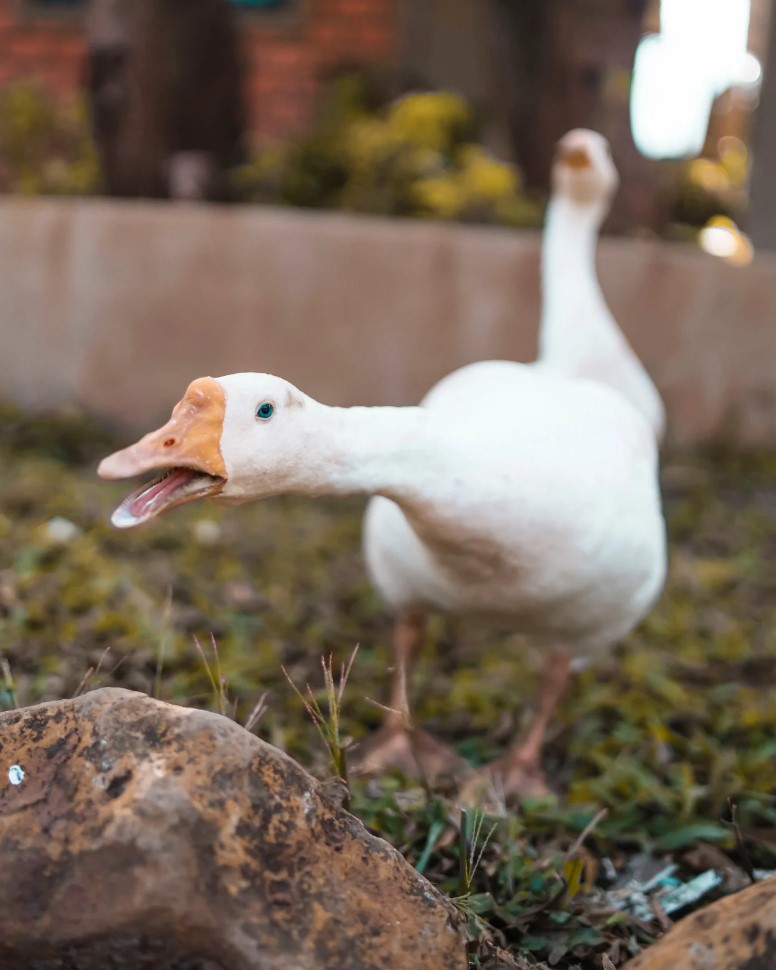
Behavioural characteristics
Geese are known for their intelligent and social nature. They are highly adaptable birds that can survive in different environments. They tend to be loyal and protective of their mates and offspring, and they are known to stay in large groups, especially when migrating. When they are migrating, geese fly in a V-formation, which helps them conserve energy and reduce air resistance. When they honk, they are actually communicating with each other, which helps them stay together and navigate.
Conclusion
Geese are fascinating birds with unique characteristics that distinguish them from other birds. Their large size, webbed feet, and flat bill are just some of the traits that make them stand out. Their monogamous and social nature, as well as their ability to fly long distances, also make them interesting to observe and study. Understanding their characteristics and features is necessary for anyone who wants to engage with them, whether for agriculture, recreational activities, or simply appreciating their beauty.
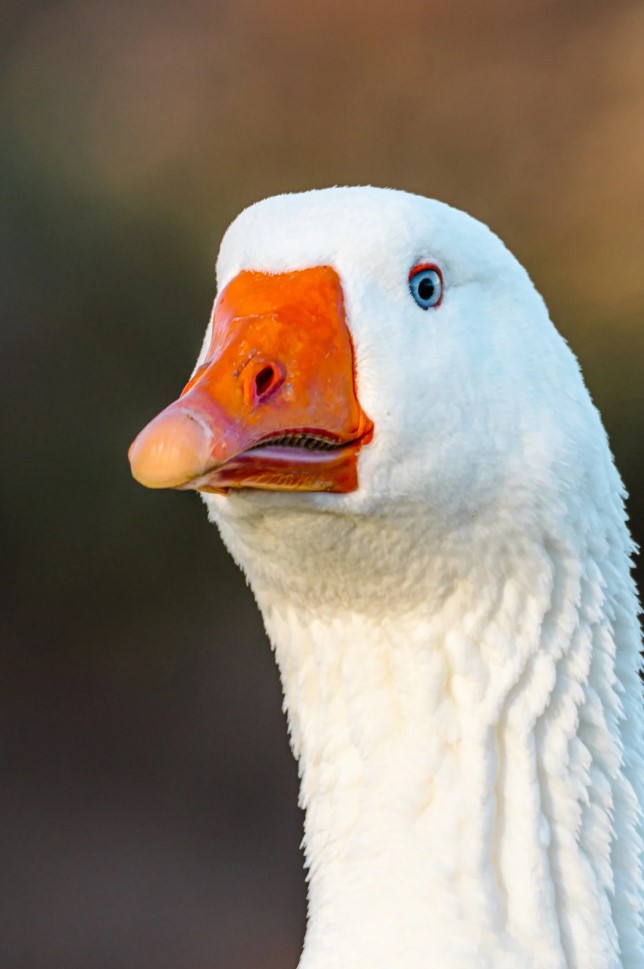
Historical Significance Of Geese İn Agriculture And Cuisine
In the world of agriculture and food, many animals play significant roles, and geese are no exception. Throughout history, geese have been valuable resources, providing humans with meat, feathers, and eggs, while also playing important cultural roles. Today, many people continue to raise and consume geese, appreciating their unique flavor and versatility in the kitchen. In this blog post, we will take a closer look at the historical significance of geese in both agriculture and cuisine.
Geese in Agriculture:
Geese have been used in agriculture for thousands of years, serving as a reliable source of meat, eggs, and feathers. These birds can thrive in a variety of climates and are known for their hardiness and adaptability. In many cultures, geese were raised for their feathers, which were used to make pillows, bedding, and other household items. The down feathers were prized for their softness and warmth and continue to be used in high-end clothing and bedding products today.
- Geese were also valuable sources of meat, especially in Europe and Asia, where they were raised in large numbers. Goose meat is rich, flavorful, and versatile, making it a popular choice for special occasions and festive meals. Roast goose is a traditional Christmas dish in many parts of the world, including Germany, Poland, and the United Kingdom.
- Geese were also used as draught animals, especially in parts of Europe where they were harnessed to carts and used to transport goods. Their strong, sturdy bodies made them ideal for these tasks, and they were often preferred over horses or oxen.
Geese in Cuisine:
Geese have played important roles in many culinary traditions around the world. From pâté to confit to roast goose, these birds have captured the imaginations of chefs and food lovers alike. In some cultures, goose dishes are considered delicacies, reserved for special occasions and holiday meals.
- One of the most famous goose dishes is foie gras, a French delicacy made from the enlarged liver of a force-fed goose. This controversial practice has been the subject of much debate in recent years, with animal rights activists and others calling for a ban on foie gras production.
- Another popular goose dish is confit, which involves cooking the bird in its own fat until it is tender and flavorful. The meat can be shredded and used in a variety of dishes, such as salads, pasta dishes, and sandwiches.
- Roast goose is a classic holiday dish in many parts of the world, especially in Germany and the United Kingdom. The meat is roasted until it is juicy and tender, and is often served with rich, flavorful sauces and side dishes.
As we can see, geese have played important roles in both agriculture and cuisine throughout history. Today, many people continue to raise and consume geese, appreciating their unique qualities and versatility in the kitchen. Whether you are a fan of foie gras or roast goose, it is clear that geese will continue to be an important part of our agricultural and culinary heritage for many years to come.
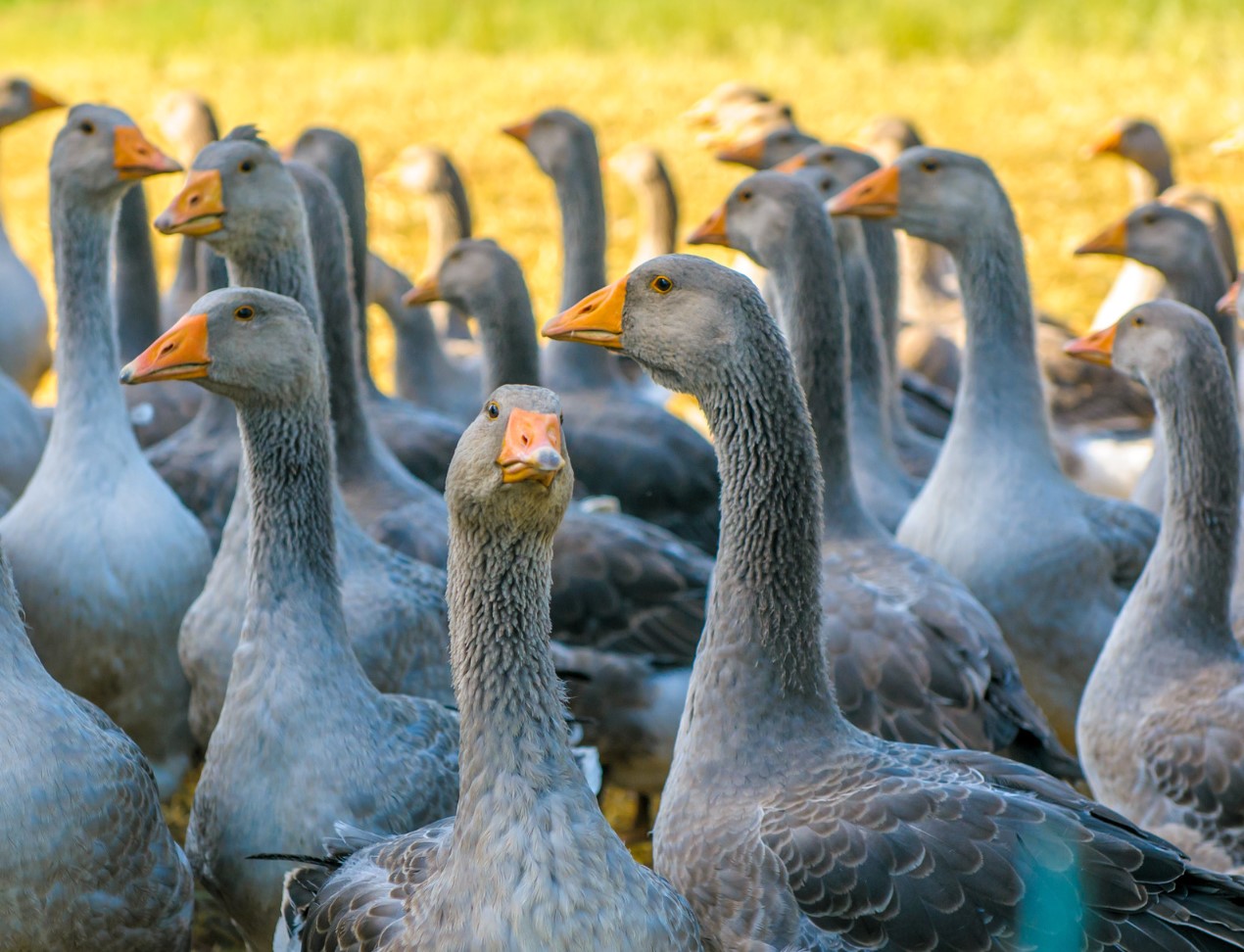
Goose Breeds: Different Types Of Domesticated Geese
When we talk about domesticated geese, we usually imagine the classic white goose commonly referred to as a “farm goose”. However, did you know that there are actually several breeds of geese that you can raise domestically? These breeds come in different sizes, colors, and are suitable for various purposes. Knowing about these breeds is crucial in deciding which type of goose suits your needs best.
- African Geese: This breed is known for its large size, typically weighing up to 20 lbs. African Geese have a rather aggressive temperament but are great foragers and lay large eggs.
- Chinese Geese: These geese are the most popular breed for meat production. They have a distinctive knob on their beaks and come in a range of colors, including brown, gray, and white. Chinese geese are also great egg layers.
- Toulouse Geese: This breed is an excellent option for meat production, with males weighing around 26 lbs. Toulouse geese are also known for their beautiful gray feathers.
If you’re looking for a breed that is great for egg-laying, then the following breeds should be on your radar:
- Embden Geese: These geese come in shades of white and are known for their large white eggs.
- Sebastopol Geese: Sebastopol geese are known for their curly feathers and beautiful gray color. They lay smaller-sized eggs but make excellent pets.
- Roman Geese: Roman geese have distinctive blue eyes and come in shades of white or gray. They are good egg layers and are excellent foragers, making them a great addition to any homestead.
All in all, domesticated geese are a wonderful addition to any homestead. They provide eggs, meat, and even feathers for pillows, insulation, and quilts. When selecting your breed, it is important to consider the purpose you want them for, their temperament, and any other special needs they may have. With the right breed, you’re sure to get the benefits of a goose for years to come.
Wild Geese Vs Domesticated Geese: Key Differences
Geese are fascinating birds that come in different types and breeds, each with unique characteristics, features, and habits. They are commonly categorized into two groups – wild and domesticated. While they may look similar at first glance, they have significant differences in terms of behavior, appearance, and lifestyle. In this blog post, we’ll explore the key differences between wild geese and domesticated geese, and why understanding these differences is essential for breeders, farmers, and enthusiasts.
Wild Geese
Wild geese, also known as migratory geese, are birds that inhabit various regions across the world, from the Arctic tundra to tropical fields. They are highly adaptable, social, and vocal birds that travel long distances to breed, feed, and survive. Some of the common types of wild geese include the Canada goose, Snow goose, and Greylag goose.
- They have a V-shaped formation during migration.
- They mate for life and build their nests in remote areas.
- They are excellent fliers and can reach high speeds.
- They feed on plants, grains, and aquatic vegetation.
Domesticated Geese
Domesticated geese, on the other hand, are birds that have been bred by humans for thousands of years. They are typically larger than wild geese and have various colors and patterns, depending on their breed. Some of the popular domesticated goose breeds include the Toulouse goose, Chinese goose, and Sebastopol goose.
- They are raised for meat or egg production and as pets or ornaments.
- They can be trained to follow commands or perform tricks.
- They have a gregarious nature and form groups for safety.
- They feed on grains, grass, and supplements.
The Differences
While both wild and domesticated geese share similarities, they are different in many ways. Wild geese are more independent, adaptable, and migratory, while domesticated geese are more docile, dependent, and stationary. Domesticated geese may have lost some of their natural instincts due to domestication, while wild geese retain their survival skills and instincts. Knowing these differences can help farmers and breeders manage their geese correctly and provide them with a suitable environment and diet.
| Wild Geese | Domesticated Geese | |
|---|---|---|
| Behavior | Highly social and vocal, migratory | Gregarious, docile, dependent |
| Appearance | Thin necks, long bills, muted colors | Larger size, varied colors, patterns |
| Habitat | Natural habitats, remote areas | Farms, parks, and gardens |
| Diet | Plants, grains, aquatic vegetation | Grains, grass, and supplements |
| Use | Wildlife, conservation, sport hunting | Meat, egg production, pets, ornaments |
In conclusion, geese are fascinating birds that have captured our attention since ancient times. By understanding the key differences between wild and domesticated geese, we can appreciate their unique qualities and characteristics and treat them with respect and care. Whether you’re a farmer, breeder, or an enthusiast, geese can provide you with joy, companionship, and utility.
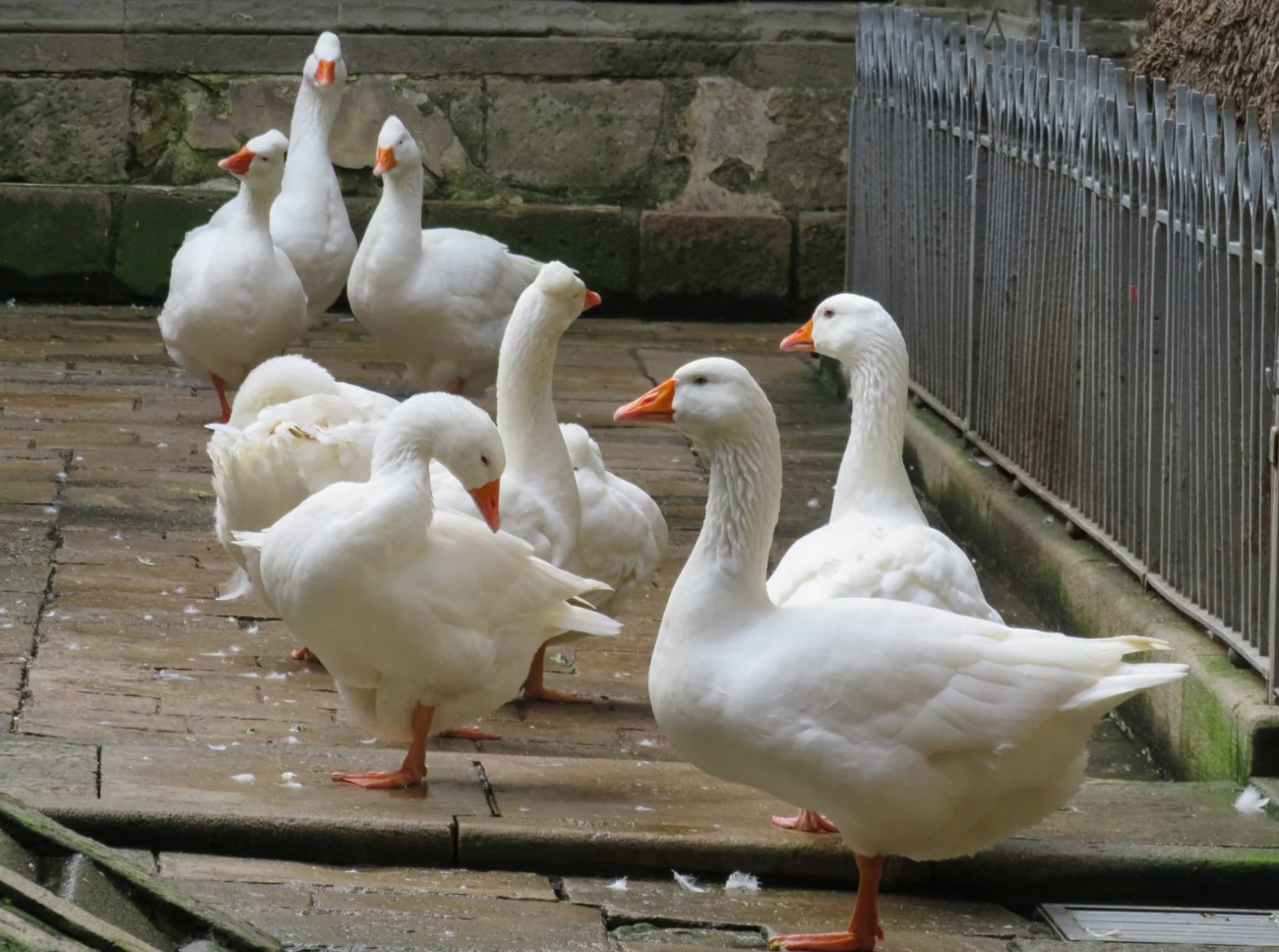
The Life Cycle Of A Goose: Reproduction And Growth
The life cycle of a goose is a fascinating topic that provides insight into the growth and development of these graceful birds. From the moment of hatching to reaching maturity, a goose undergoes several phases that contribute to its physical and behavioral characteristics. Let’s take a closer look at the different stages of a goose’s life cycle.
1. Egg Stage: The beginning of a goose’s life cycle starts with the egg stage, where the female goose lays eggs. The process begins during the breeding season, and the eggs are typically laid in a nest. The eggs take around 28 to 32 days to hatch, and during this period, the female goose incubates the eggs by sitting on them to keep them warm.
2. Gosling Stage: Once the eggs hatch, the young ones, known as goslings, come out. During this stage, the goslings are vulnerable and require the primary care of their parents. The goslings cannot fly or swim independently and rely on their parents for food and protection. This stage lasts for around 60 days.
3. Juvenile Stage: After the gosling stage, the goose enters the juvenile stage. At this stage, the goose starts to develop its feathers, wings, and other physical characteristics. It learns to swim, fly, and search for food on its own, gradually preparing for adulthood. During this stage, the goose is still dependent on its parents to some extent, but it becomes more independent as it grows older.
4. Adult Stage: The final phase of a goose’s life cycle is the adult stage, where it reaches maturity. Adult geese are fully grown and have developed their distinctive physical features, including their feathers and wings. They are capable of finding their food, swimming and flying independently, and reproducing. Adult geese can live anywhere from 10 to 24 years.
The life cycle of a goose is a remarkable process that illustrates how these beautiful creatures develop and grow. Understanding the different stages of a goose’s life cycle can help us appreciate the importance of protecting them and their habitats, ensuring their continued survival in our environment.
The Anatomy Of A Goose: Understanding Their Body
Geese are fascinating creatures that have been admired for centuries. Many people are familiar with their distinctive honking sound and their V-shaped flight formation, but not everyone knows much about their anatomy. Understanding the body of a goose can help us appreciate these birds even more.
- Skeletal System: Like all birds, geese have a lightweight skeleton that helps them fly. Their bones are hollow, and many of them are fused together for strength. Geese also have a flexible neck that allows them to look around without moving their entire body.
- Muscular System: A goose’s breast muscles are the most important muscles for flight. They are very strong and work in tandem with the wings to provide lift. Geese also have webbed feet, which makes them excellent swimmers. Their leg muscles are strong, too, allowing them to walk and run on land if necessary.
- Respiratory System: Geese have a highly efficient respiratory system that allows them to extract oxygen from the air quickly. Their lungs are connected to several air sacs that help them breathe while flying. This adaptation makes them very efficient flyers, as they can take in more oxygen per breath than most other birds.
Overall, the anatomy of a goose is an amazing example of how animals have evolved and adapted to their environments. Whether we admire them for their graceful flight or juicy meat, geese are an important part of our world.
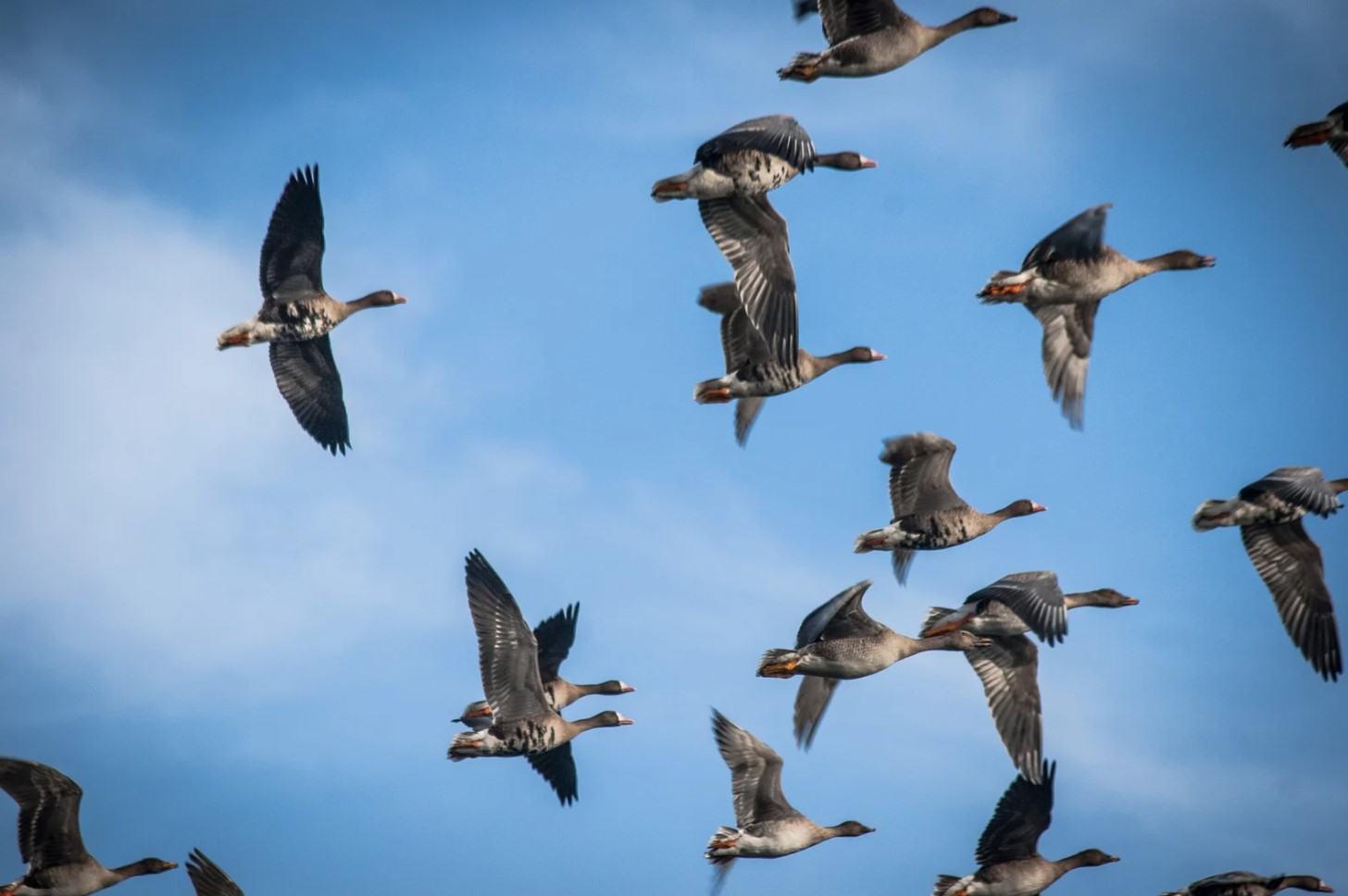
Goose Feeding Habits: A Guide To Proper Nutrition
Geese are wonderful birds that have become quite popular as domesticated animals over the years. They are known for their social nature and impressive honking sounds that can be heard from afar. When it comes to taking care of geese, one of the crucial things that you need to pay attention to is their feeding habits. In this post, we’ll take a closer look at goose feeding habits and provide you with some guidelines on how to ensure that your geese are getting the proper nutrition they need.
Understanding a Goose’s Nutritional Needs
In order to properly feed your geese, it’s important to first understand their nutritional needs. Geese feed on a variety of things, including grass, seeds, grains, and insects. They also need a good source of protein to ensure that their bodies are functioning properly. As such, it’s important to provide them with a well-balanced diet that includes a mix of different foods to ensure that they are getting all the nutrients they need.
- Feed Them a Balanced Diet: As mentioned, geese need a well-balanced diet that includes a mix of different foods. You can purchase commercial goose feed or create your own feed mix using grains, seeds, and other ingredients.
- Provide Access to Fresh Water: In addition to food, geese also need access to fresh water. Make sure that they have access to clean water at all times, and change it frequently to prevent bacteria growth.
- Don’t Overfeed: While it’s important to ensure that your geese are getting enough food, it’s equally important not to overfeed them. This can lead to obesity and other health problems.
Common Feeding Mistakes to Avoid
There are some common feeding mistakes that you should avoid when it comes to keeping geese. These include:
- Feeding geese too much bread: While geese love bread, it’s not a nutritious food for them. In fact, too much bread can cause digestive problems and even malnutrition.
- Feeding geese spoiled or moldy food: Always make sure that the food you give to your geese is fresh and not spoiled or moldy. This can cause health problems and even death.
- Not providing enough variety: Geese need a variety of different foods to stay healthy. Make sure that you provide them with a mix of different foods, instead of just one type of food.
By following these guidelines and avoiding common feeding mistakes, you can ensure that your geese are getting the proper nutrition they need to thrive. As always, consult with a veterinarian if you have any concerns about your geese’s health.
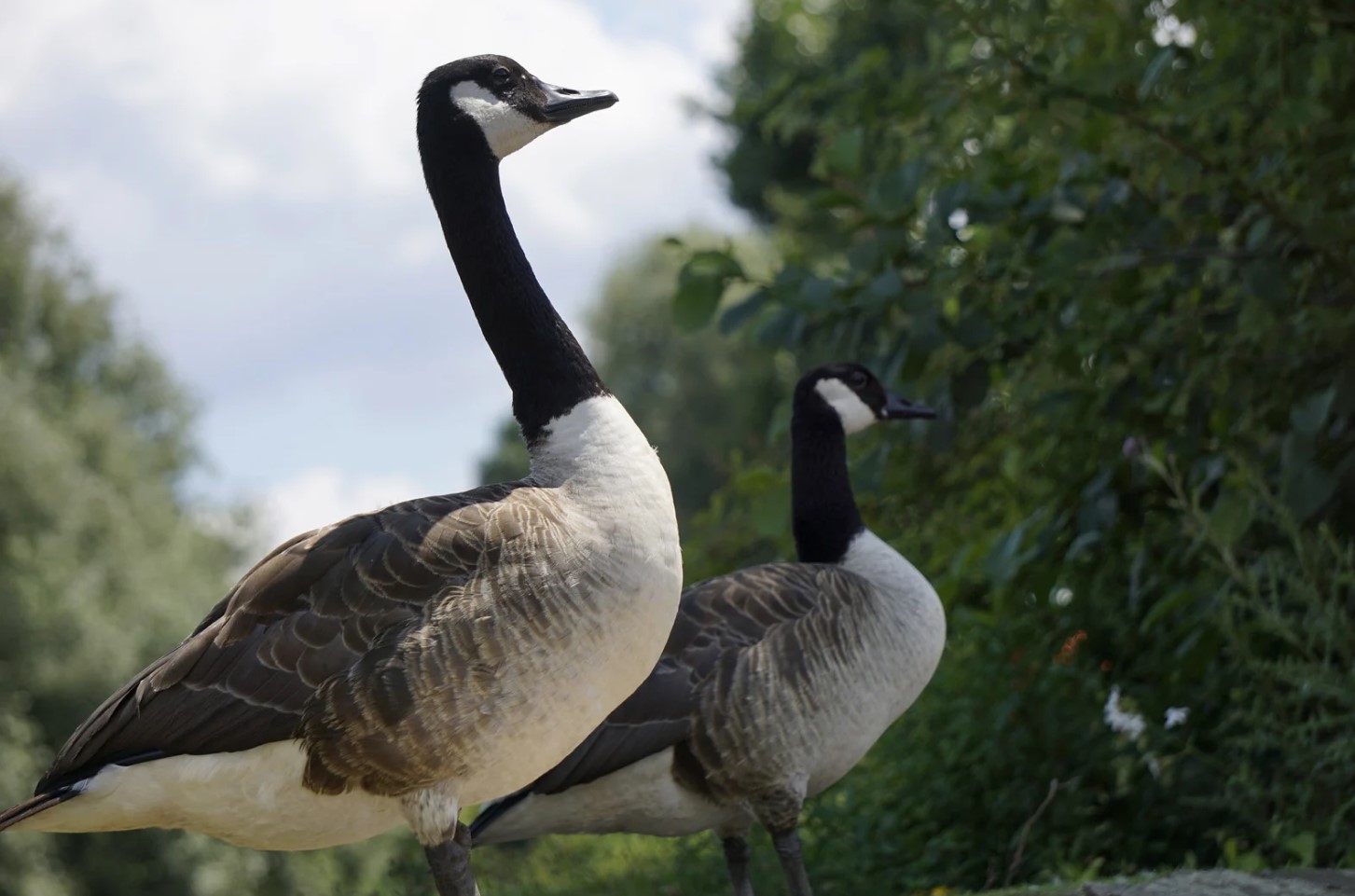
Housing Geese: The Importance Of A Comfortable And Safe Environment
Geese are social creatures that thrive in comfortable and safe environments. As such, it is essential to provide them with adequate housing. The housing should be spacious, well-ventilated, and protect the geese from extreme weather conditions. A good goose house should also have clean bedding and free from predators such as foxes, coyotes, and other wild animals.
The house should also have perches, nesting boxes, and areas for food and water. Domesticated geese have a tendency to wander, and so their housing should be fenced to ensure that they do not wander off or become prey to predators. It is also important to keep the house clean to maintain hygiene and prevent the geese from contracting diseases.
- The following are some essential considerations when designing and building a goose house:
- The size should be proportional to the number of geese that you intend to keep.
- The house should be situated on higher ground to prevent flooding during heavy rainfall.
- It should have adequate ventilation to prevent the buildup of ammonia from excrements.
- The roofing should be sturdy and provide shade during hot weather.
When designing a goose house, you need to consider some basic principles of animal housing. The housing should be conducive to the health and growth of the geese, as well as provide easy access to food and water. Goose houses should also provide enough space to enable the geese to move around freely, stretch their legs and wings, and express their natural behavior. Overall, the objective of a goose house is to provide a comfortable and safe environment that promotes their overall well-being.
| Pros of Good Goose Housing | Cons of Poor Goose Housing |
|---|---|
|
|
In conclusion, good goose housing is vital to ensure that domestic geese live in a comfortable and safe environment. It improves production, prevents stress and aggression, and protects the geese from predators. Poor housing, on the other hand, puts the geese at risk and lowers productivity. Thus, it is essential for goose farmers to invest in proper housing to ensure that their geese thrive and remain healthy.
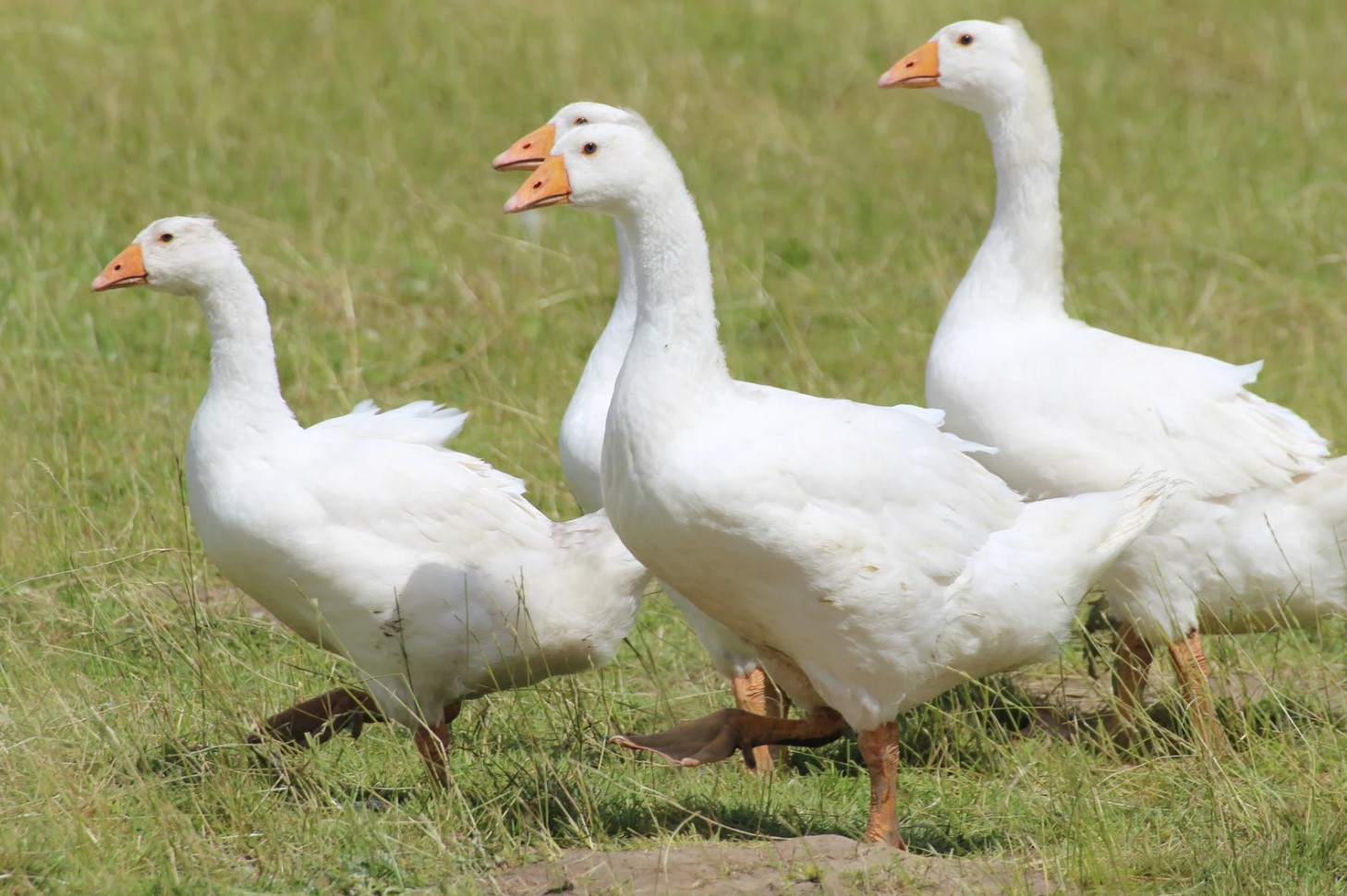
Breeding Geese: Tips And Tricks For Successful Breeding
When it comes to breeding geese, there are certain tips and tricks that can help ensure the success of the process. One important factor is choosing the right time to breed your geese. Typically, this is done in early spring when the days start to get longer and the weather begins to warm up. It is also important to make sure your geese are in good health and have access to plenty of fresh water and a well-balanced diet.
Another important consideration when breeding geese is choosing the right breeding pair. Geese are monogamous and will usually mate for life, so it is important to choose a compatible pair. Look for geese that are of similar size and temperament, and make sure they are not too closely related to avoid genetic problems in their offspring. It is also important to provide a comfortable and safe nesting space for your geese, such as a secluded spot in a barn or coop with plenty of straw or other soft bedding material.
- One tip for successful breeding of geese is to monitor the egg-laying process carefully. Female geese will typically lay one egg per day during the breeding season, and it is important to keep track of the number of eggs and their location to ensure they are not damaged or stolen. When the female goose begins to sit on the eggs, it is important to ensure she has enough food and water and is not disturbed excessively.
- Finally, it is important to be patient when breeding geese. Sometimes it can take several tries before a breeding pair is successful in producing viable offspring. It is important not to rush the process and to provide plenty of support and care for your geese throughout the breeding season.
By following these tips and tricks, you can increase your chances of successful breeding of geese and enjoy the many benefits of raising these fascinating birds. Whether you are breeding geese for eggs, meat, or simply for pleasure, it is important to take the time to provide proper care and attention to ensure their health and well-being.
Health Concerns For Geese: Common Illnesses And How To Prevent Them
Geese are known for their majestic appearance and their incredible honks. While they may seem tough and resilient, geese are actually susceptible to a variety of illnesses and health concerns. As a goose owner, it is important to be aware of these common illnesses and take steps to prevent them. Here are some of the most common health concerns for geese and how you can prevent them:
- Botulism: Botulism is a type of food poisoning that is caused by bacteria in water that is contaminated with decaying matter. To prevent botulism, keep your goose’s water source clean and remove any dead animals from the area.
- Respiratory infections: Geese are prone to respiratory infections, especially in cold and damp environments. To prevent respiratory infections, make sure your goose’s living environment is warm, dry, and well-ventilated. Provide plenty of clean water and avoid overcrowding.
- Worms: Geese are also susceptible to a variety of internal parasites, including worms. To prevent worm infestations, keep your goose’s living environment clean and dry, and provide regular deworming treatments.
These are just a few of the many health concerns that geese can face. As a goose owner, it is important to be knowledgeable about common illnesses and take steps to prevent them. By keeping your goose’s living environment clean and providing appropriate nutrition and medical care, you can help ensure that your geese stay healthy and happy.
Goose Egg Production: How To Determine Egg Quality
Goose egg production is a profitable business for many farmers. However, producing high-quality eggs is crucial for maintaining good sales and reputation in the market. Determining the egg quality is a crucial aspect of goose egg production. This involves assessing various characteristics of the eggs, including size, weight, shape, shell texture, and yolk color.
When determining the egg quality of geese, size plays a vital role. Generally, goose eggs should weigh around 140-180 grams, and their diameter should be around 3-3.3 inches. The eggshell should be strong, firm, and have a smooth texture. You can determine the shell texture by rolling the egg between your fingers or by inspecting it visually. The yolk color of a healthy egg should be bright yellow or orange, which indicates that the goose is consuming a healthy and nutritious diet.
- Pay attention to the size and weight of the eggs.
- Check the texture of the eggshell to ensure strength and firmness.
- Inspect the yolk color to assess the health and nutrition of the goose.
In addition to these factors, the freshness of the egg is also crucial for determining quality. Fresh eggs have a strong and consistent shell texture and a small air pocket inside the shell. Old or rotten eggs will float in water, while fresh eggs will sink to the bottom. Therefore, it is important to use these criteria when assessing the quality of goose eggs and to maintain a high level of quality control throughout the production process.
| Egg Quality Criteria | Desired Value |
|---|---|
| Weight | 140-180 grams |
| Diameter | 3-3.3 inches |
| Shell Texture | Strong, firm, and smooth |
| Yolk Color | Bright yellow or orange |
By following the proper standards and guidelines for goose egg production, it is possible to consistently produce high-quality eggs that meet market demands. Ensuring the health and nutrition of the goose, maintaining proper storage conditions, and practicing good quality control are all necessary steps to achieve this goal. With these tips and tricks, you can successfully determine the quality of goose eggs and maintain a profitable goose egg production business.
Raising Geese For Meat: Slaughtering And Processing
Raising geese for meat production can be a profitable venture for farmers and homesteaders alike. Geese are a great source of protein and their meat is highly valued for its flavor and nutritional value. However, it is important to note that raising geese for meat requires specialized knowledge on the slaughtering and processing of the birds.
Slaughtering Geese: Before slaughtering geese, it is important to ensure that they are healthy and have not been treated with any medications or antibiotics. This is important to prevent any residues in the meat that can be harmful to humans. Slaughtering can be done using a sharp knife or a specialized mechanical tool called a killing cone. It is important to ensure that the bird is completely incapacitated before proceeding with the slaughter. The bird should be bled out by making a small incision in the neck and allowing the blood to drain out.
Processing Geese: Once the bird has been slaughtered and bled, the next step is to process the meat. This involves removing the feathers, head, feet and internal organs. The easiest way to remove feathers from a goose is by scalding. This involves immersing the bird in hot water for a few minutes to loosen the feathers. The feathers can then be plucked out by hand or by using a plucking machine. After removing the feathers, the head, feet and internal organs should be removed. The meat can then be cleaned and prepared for storage.
- Geese should be hung for a few days to allow the meat to age and become tender.
- The meat can be cut into different parts, such as breasts, legs and wings, and packaged for sale or storage.
- It is important to ensure that the meat is stored at a cool temperature to prevent spoilage.
Raising geese for meat can be a rewarding experience, but it requires knowledge of proper slaughtering and processing techniques. It is important to take the necessary precautions to ensure that the meat is safe for human consumption. With the right care and attention, geese can provide a consistent source of high-quality meat for the table.
The Use Of Geese İn Art And Folklore
The use of geese in art and folklore has been known for centuries. Geese have appeared in various forms of art, including paintings, sculptures, and literature. In some cultures, the goose holds significant beliefs and values that have impacted people’s lives, giving them hope and happiness in times of despair.
In ancient times, geese were used as a muse for artists. They were believed to represent purity, intelligence, and dignity. They were characterized as elegant and graceful birds, and some famous painters, such as Paul Klee, have used them as subjects that reflected their personalities and personal interests.
- Geese have also been used in sculptures
- In literature, geese have been used to represent various themes
| Artworks | Author |
|---|---|
| The Goose Girl | Jacob and Wilhelm Grimm |
| The Seasons: Fall (The Goose Girl) | Giuseppe Arcimboldo |
| The Goose with the Golden Egg | Aesop |
In some folklore, geese have represented an ability to see the future, with specific domestic geese believed to have special predictions for the coming weather or outcomes of specific events. In other instances, geese have been believed to represent difficult journeys and struggles to overcome.
Similarly, geese have also played a part in spiritual beliefs. Some people in Native American tradition have associated the goose with the Earth Mother and believe that it symbolizes community, sharing, and commitment. This means that people have learned to respect the geese and use them in their everyday lives as providers of good fortune and positive energy.
In conclusion, geese have played significant roles in art and folklore for centuries. From their delicate nature in paintings and sculptures to their symbolism in literature and spiritual beliefs, geese have been an important part of the human experience.
Symbolism Of Geese İn Different Cultures
Geese are fascinating birds that have captured the attention of many cultures throughout history. In different parts of the world, geese have been regarded as symbols of various things such as loyalty, courage, and wisdom. Symbolism of geese has been found in literature, art, religion, and folklore across the globe. A study of the symbols that geese represent gives us insight into the ways in which people have interacted with these magnificent birds over the years.
For example, in Egyptian mythology, the god Geb was said to have a goose representing the aspects of his nature that were celestial and mystical. In ancient Greece, the goddess Aphrodite was sometimes depicted with a goose as a symbol of her guardianship of the city of Byblos, which was associated with the migration of geese. In Celtic mythology, geese were associated with poetry and knowledge, and represented spirit guides that guided the soul through various realms of existence.
- Moreover, in China, geese represent fidelity, loyalty, and wisdom. In Chinese folklore, geese were said to be able to tell the future and warn of impending danger. They were also associated with the famous philosopher Confucius, who was said to have raised a flock of geese that followed him around and quacked in appreciation of his teachings.
- In Native American culture, the goose is often seen as a symbol of travel and migration. In some tribes, a medicine man would wear a goose feather headdress to symbolize his journey through life and the wisdom he had gained along the way.
As we can see, the symbolism of geese has been rich and diverse across different cultures throughout history. It is a testament to the importance of these birds in human lives and the ways in which they have captured the imaginations and hearts of people everywhere. Understanding the symbolism of geese can help us better appreciate the role that these birds have played in shaping our cultures and the world around us.
Conclusion: The Importance Of Geese İn Our Environment And Society Today
Geese have been an important part of human society for centuries, providing us with food, feathers, and even inspiration for art and folklore. Their ability to migrate long distances and their unique characteristics make them a fascinating species that has been studied and admired by many. As we look back on the history of geese in our society, it’s clear that they have played a significant role in shaping our environment and culture.
One of the most important roles that geese play in our environment is through their ability to control pest populations. Geese are natural predators of certain insects and weeds, which can be harmful to crops and other plants. By allowing geese to graze in fields and pasturelands, farmers can reduce the need for costly and harmful pesticides. Additionally, geese are an important part of the food chain, providing sustenance for predators such as foxes, coyotes, and eagles.
Geese also have an important cultural significance. They have been used as a symbol of loyalty, vigilance, and love in various cultures around the world. In many Native American cultures, geese are considered a symbol of fertility and rebirth. They are often incorporated into traditional dances and ceremonies. In European cultures, geese were considered a sign of good fortune and were often used in feasts and celebrations.
| Geese Fact | Description |
|---|---|
| Goose down | Goose down is often used as insulation in pillows and comforters due to its warmth and softness. |
| Goose liver | Goose liver, also known as foie gras, is considered a delicacy in many parts of the world. |
| Barnacle geese | Barnacle geese are known for their unique migration pattern, which was once thought to involve the transformation of a type of goose barnacle from the sea. |
In conclusion, geese are an important part of our environment and culture. They provide us with food and other resources, control pest populations, and serve as inspiration for art and folklore. Additionally, their natural migration patterns and unique characteristics make them a fascinating species that has captured the attention of humans for centuries. As we move forward, it’s important that we continue to appreciate and preserve the role that geese play in our society.